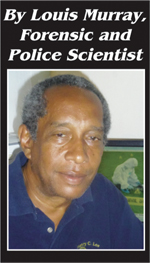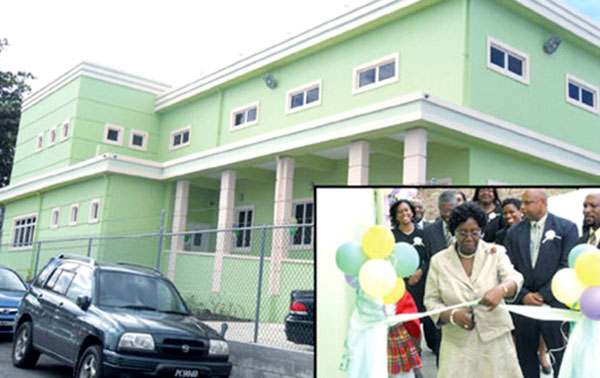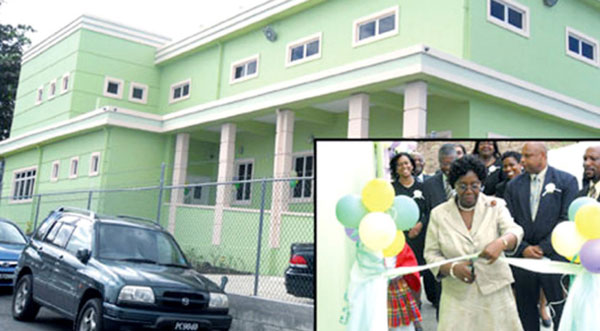 IN my first article I presented the forensic dilemma facing the government. A collapsed service, a much too long dormant if not abandoned array of state of the art instrumentation and a deteriorated and structurally compromised facility now requiring substantial capital for urgent restoration works. Staffing remains a major issue while overseas referrals are very costly. So how did we get to that sad state of affairs?
IN my first article I presented the forensic dilemma facing the government. A collapsed service, a much too long dormant if not abandoned array of state of the art instrumentation and a deteriorated and structurally compromised facility now requiring substantial capital for urgent restoration works. Staffing remains a major issue while overseas referrals are very costly. So how did we get to that sad state of affairs?
Even as a good idea, our forensic laboratory’s hasty conception and rush to construct resulted in a not the best choice of location at Tapion, devoid of the necessary space for ground floor service components like a vehicular examination bay and future expansion. Some say the sea environment is detrimental to its sensitive equipment. As I indicated its structural integrity is now a costly issue. Is it location related? However and more importantly there is no doubt the laboratory has been a victim of the neglect of the proper development of our initial forensic service and its human resources when it mattered most.
That willful neglect fueled a collapse in 2005 of the initial forensic service housed at the Victoria Hospital laboratory and unfortunately that occurred at the critical period when the new forensic facility was being built. That initial service should have been maintained not only for what it provided but importantly as the vehicle for operational continuity and human resource development for the new facility when it would have opened. Last time I indicated that a fallout from the collapse of that service was contamination of many biological exhibits through improper collection and or storage conditions, all of which unfortunately had to be discarded.

Even previously between 2002 to 2005 staff potential was stymied as our young forensic scientists were all sidelined and denied opportunities to be engaged in case work despite some having received specific government training to so do. Instead and during those crucial four years that forensic work was contracted out at unnecessary high recurring costs (hotel, airfares and consultancy fees) to an overseas entity who enjoyed multiple and apparently guaranteed contracts and ironically who had trained one of our scientists to do that very work. Sadly all such only robbed our by then very frustrated young scientists of the case work exposure and experience critical for their professional development, and so simply put, the very Ministry of Justice/Legal Affairs mandated to oversee the proper development of our forensic service instead failed and stifled it. Consequently the new facility opened in 2010 handicapped as nearly all of our local human resource were in the main professionally unprepared to operate within its walls.
That tale of twists also crept into the construction of the new laboratory where a number of late but necessary structural and other alterations had to be made but at significant adjustment costs. To refer to just two was my bewilderment that a modern forensic laboratory had provision for only one examination room and so changes had to be made for the creation of an additional one. A third would have been better. Also was the notable absence of such an important feature as DNA services. From the Verlinda Joseph murder in 2002 and continuing, successive governments were paying exorbitant fees for overseas DNA services and it was important that such would have been addressed at the new laboratory. Following a redesign a DNA unit was constructed. In the interest of space I will let ride the other aspect of unnecessary cost excesses.
All of that was made worse by costs incurred from 2010 hurricane Tomas water damage to the new facility and its contents due to roofing issues. At the same time the unexplained discovery of a termite infestation necessitated urgent foundation treatment and replacement of an entire flooring and all other affected wood work. Additionally was the surprising replacement of the laboratory’s ceiling a year after opening, the reason given was the wrong tiles had been installed.
The lessons are many and expose significant ministerial unawareness, unpreparedness and a lack of both proper monitoring and developmental vision. The development of our initial forensic service was poorly handled as often misplaced thinking prevailed. Failure to seek and or follow sound direction was a key culprit and such even permeated case work technical advice given. Unfortunately that style re-emerged in the new facility as the correct scientific based administrative decisions to facilitate its proper management, best practices and operations were disregarded and so no surprise that what should have been a beacon in the fight against crime was instead turned into the sad tale that currently exists. Evidently the thinking was that concrete blocks and equipment would have been the magic to a new and efficient service and now history has been repeated with another forensic service collapse and closure. Seemingly nothing was learnt from mistakes of the past and it is all that which has caused me on occasions to question if we were really ready for such a service in Saint Lucia.
The laboratory presents a significant operational and financial challenge. A plan with a commitment to urgency will have to be at play to remedy the situation and must also include safeguarding equipment during restoration work. Our forensic investment is at a crossroad and while I sympathize with the new government as to what they have inherited the challenge is now theirs. Consequently there will be no room for poor judgement and mistakes of the past and the authorities will have to be advised by an amalgamation of forensic competence moving forward.
A forensic laboratory relies on the quality and credibility of its work and integrity and ethical conduct of its examiners. Its reputation is its life. Consequently the ‘to do’ list must be headed by a transparent resolution of the criminal investigation still hanging over it, unbelievable for a facility that is supposed to be a fortress of integrity and accountability. A competent laboratory hierarchy must be appointed to include experienced examiners and trainers, quantity not nearly as important as quality and all cleared junior staff, bar one, reassessed and strengthened with the kind of training for which little provision was previously made. Strict attention must be paid, as was not done before, to staff recruitment and screening. Instrumentation readiness must be reassessed and operational guidelines rechecked. Logistics and issues of security must be reviewed. I can assure there are other important matters to be revisited and decided upon.
A bit of good news is government’s thinking to have the laboratory also serve as a referral centre for the OECS region even as it wasn’t indicated as to the form that would take. Irrespective such is wise thinking as those islands can ill afford to each have its own laboratory and so good sense must prevail as efficiency and viability will be best achieved via a shared arrangement. But that will have to be well set out and convincingly sold to member states. However, that increased client base will be a new and fundamental challenge requiring the management of and operations at such a laboratory to be ready and strong to successfully execute the mandates of the participating states.












These missteps and miscalculations happen when Governments are either unaware of the skilled nationals and experts at their disposal, or are aware, but choose to not utilize these skills. There are countless Saint Lucians at home, like yourself and Dr. Alison Plummer, and also in the Diaspora, like Dr. Nigel Horscroft whose involvement in the design, construction and operationalization of this important facility might have avoided the missteps you’ve described. Hopefully, now they will be involved in making things right. This facility is too important to our country’s security to remain in in its current state of near abandonment.
CIS